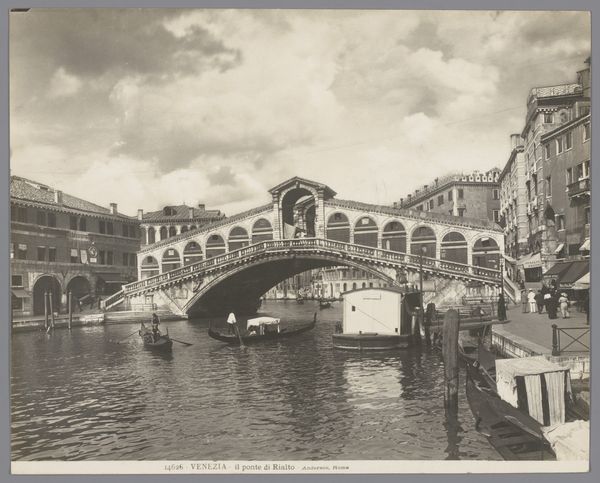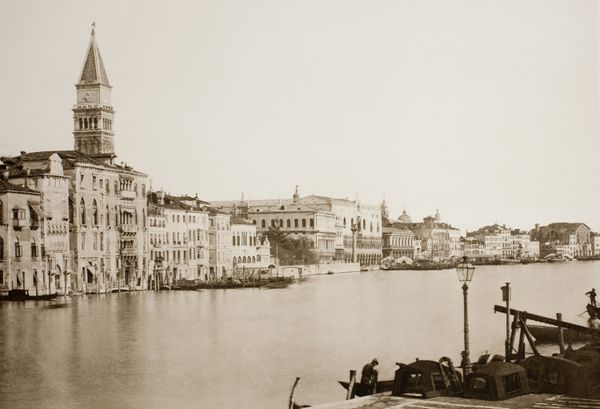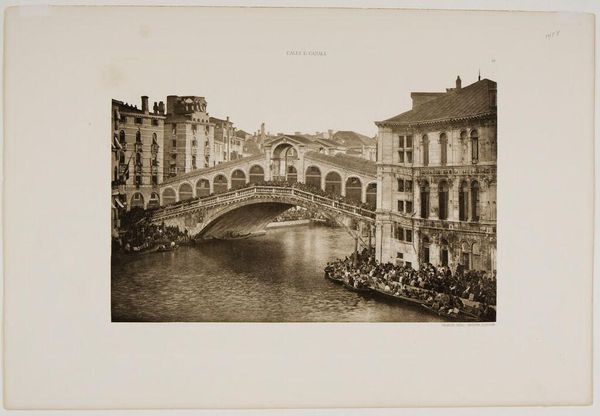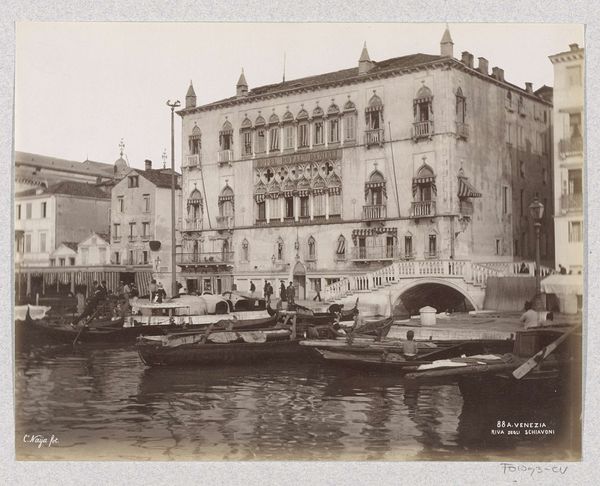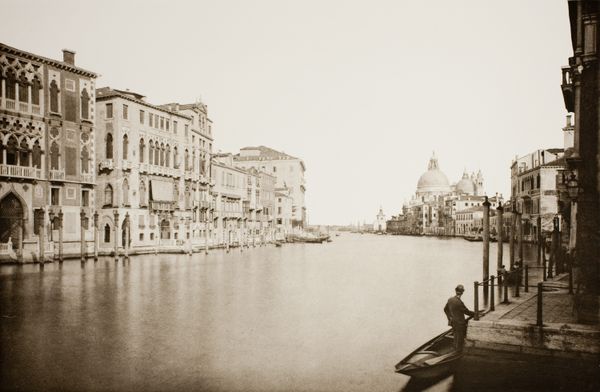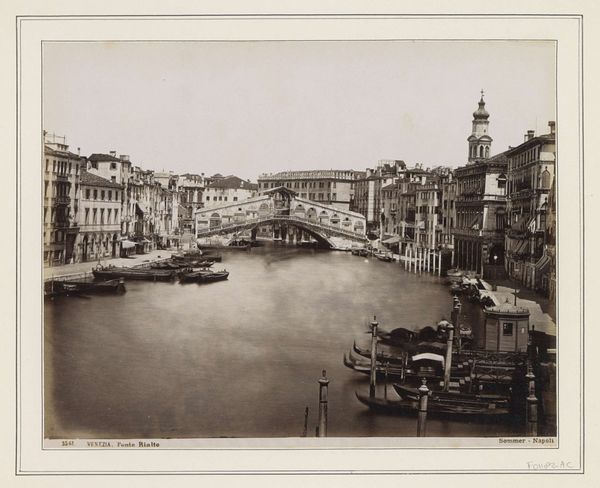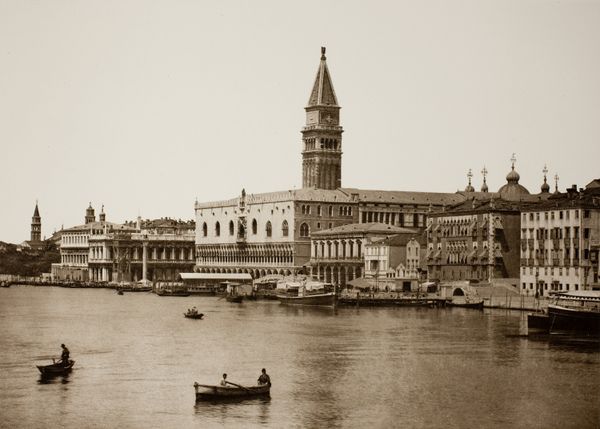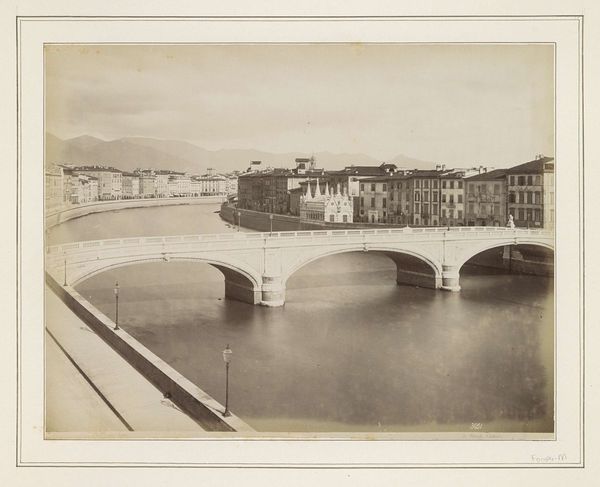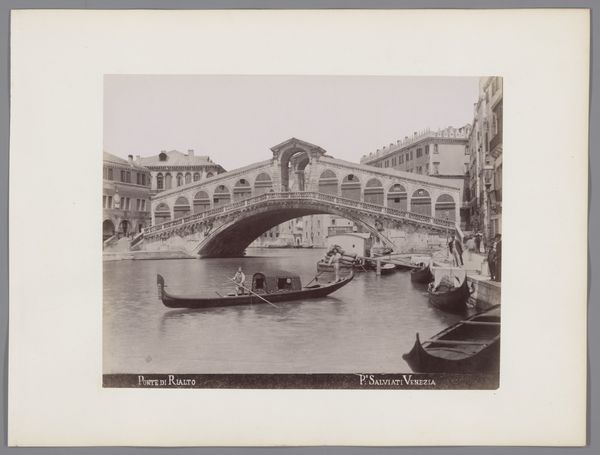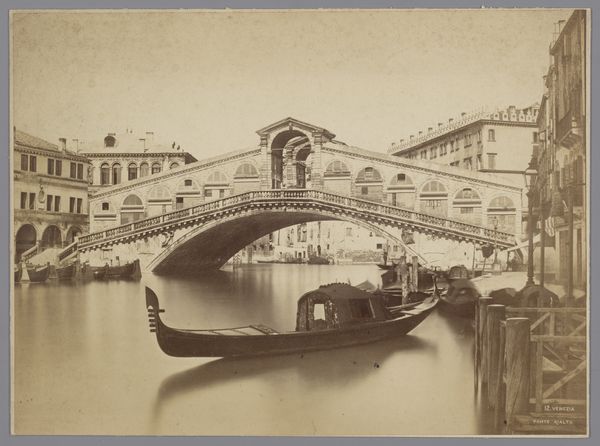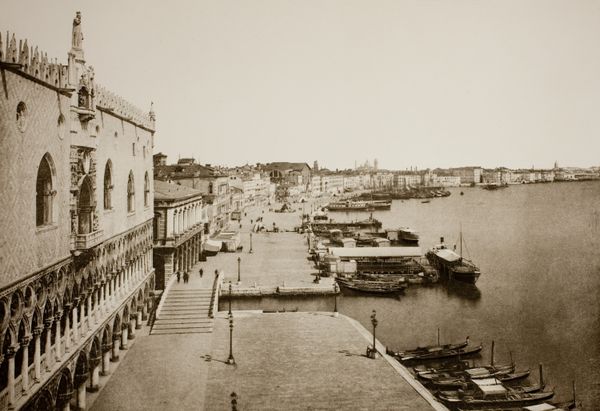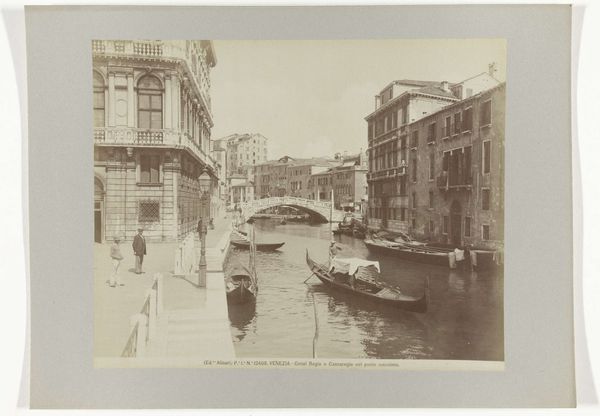
Dimensions: 25.2 × 36.1 cm (image); 36.9 × 55 cm (paper)
Copyright: Public Domain
Ferdinando Ongania captured this sepia-toned photograph of the Rialto Bridge in Venice sometime in the late 19th century. Photography, at this time, involved a complex orchestration of chemistry and optics, resulting in images like this one, printed on paper using a laborious darkroom process. Look closely and you'll notice that the image’s warm, brown tones come from the specific chemical formulas used during development. The tonal range isn’t just a matter of aesthetic choice; it is inherent to the materials used. These processes have imbued the artwork with social and cultural significance. In those days, photography was a relatively new technology, quickly becoming a tool for documenting the world and democratizing image-making. The very act of capturing Venice, a city steeped in history and tradition, and reproducing it for mass consumption, speaks to the shifting dynamics of labor, politics, and consumption in the industrial age. Ultimately, understanding photography requires that we appreciate the confluence of materials, making, and context. Only then can we challenge the traditional distinctions between fine art and craft.
Comments
No comments
Be the first to comment and join the conversation on the ultimate creative platform.
